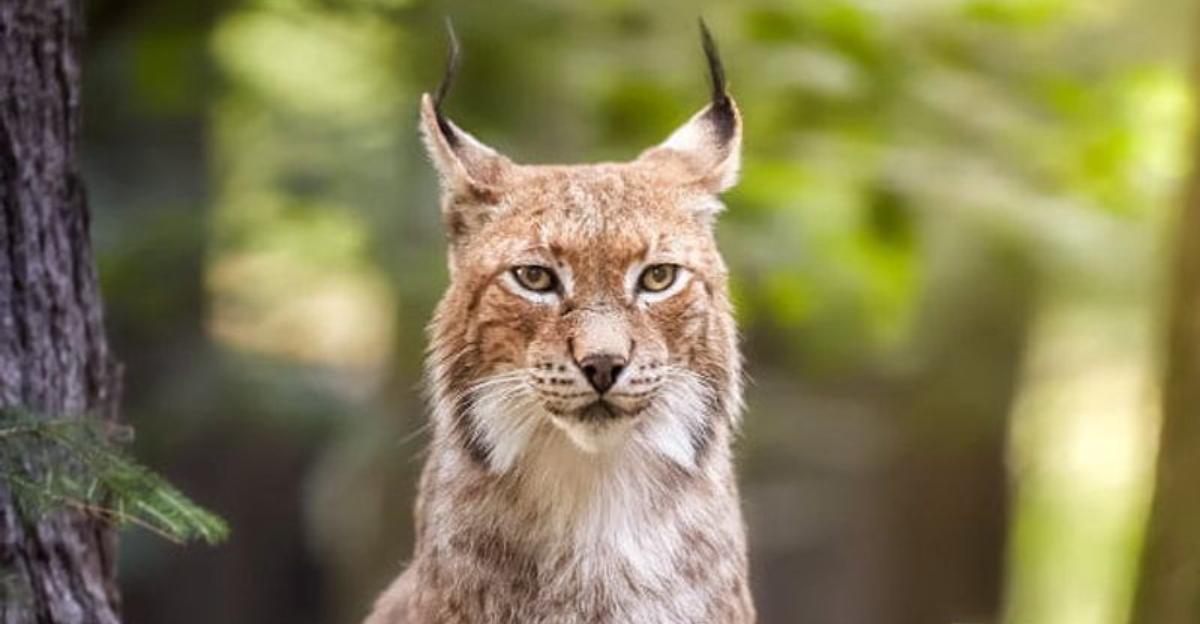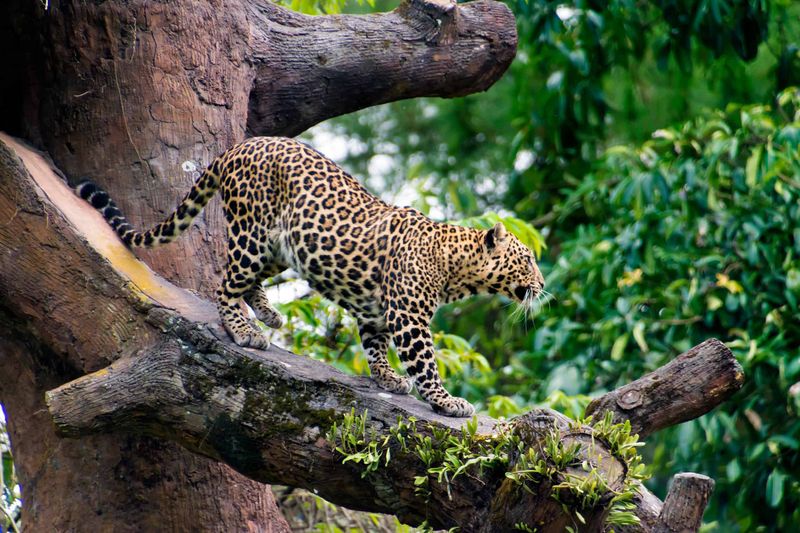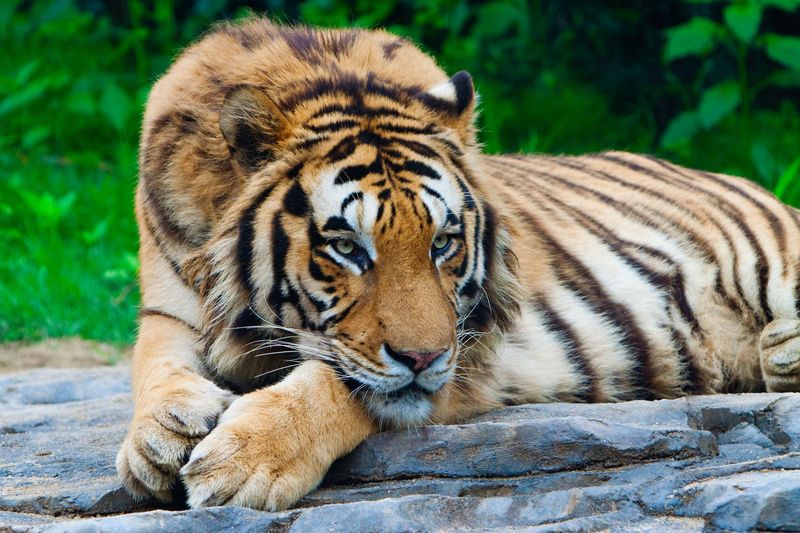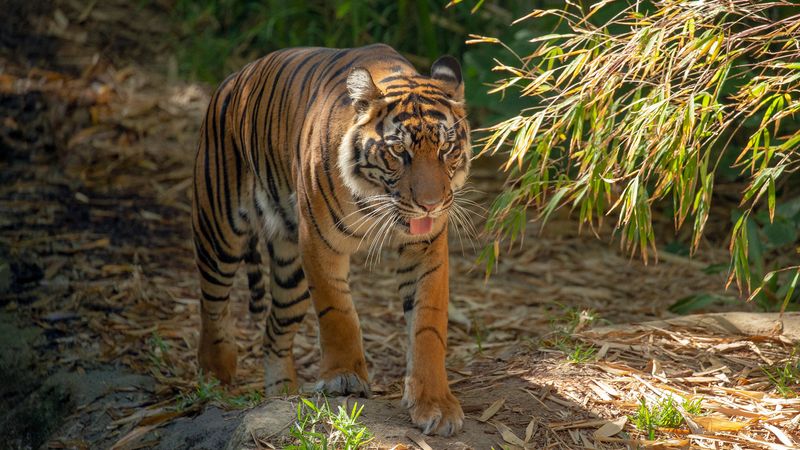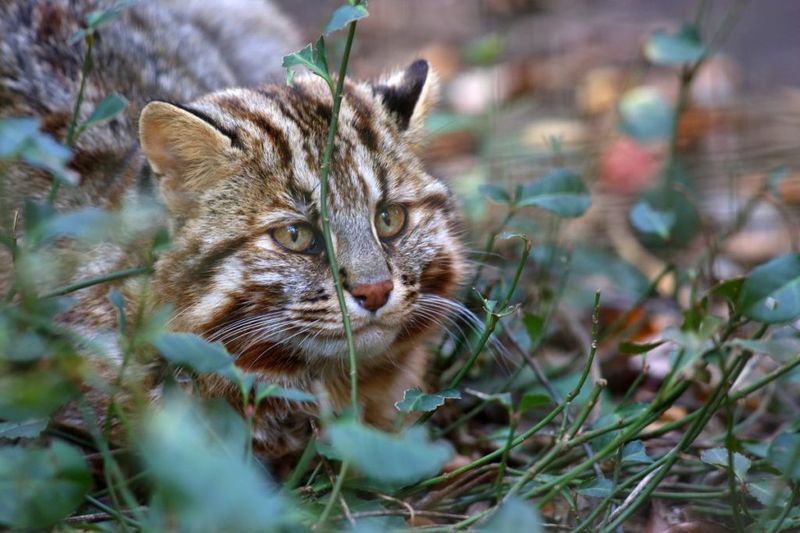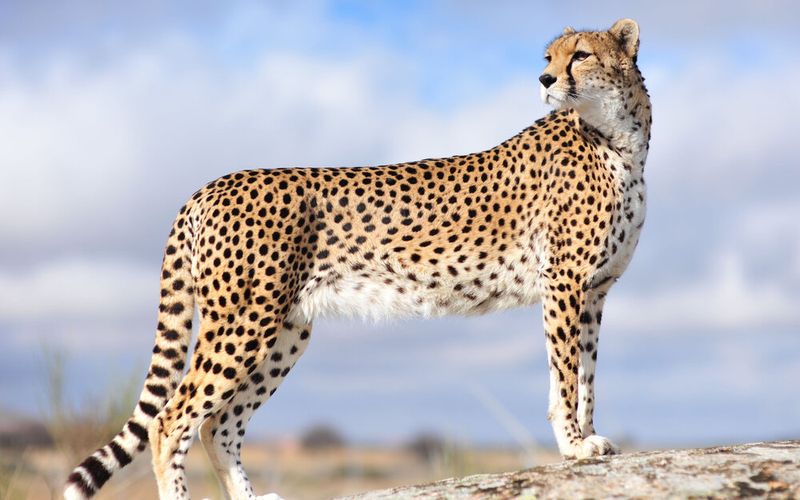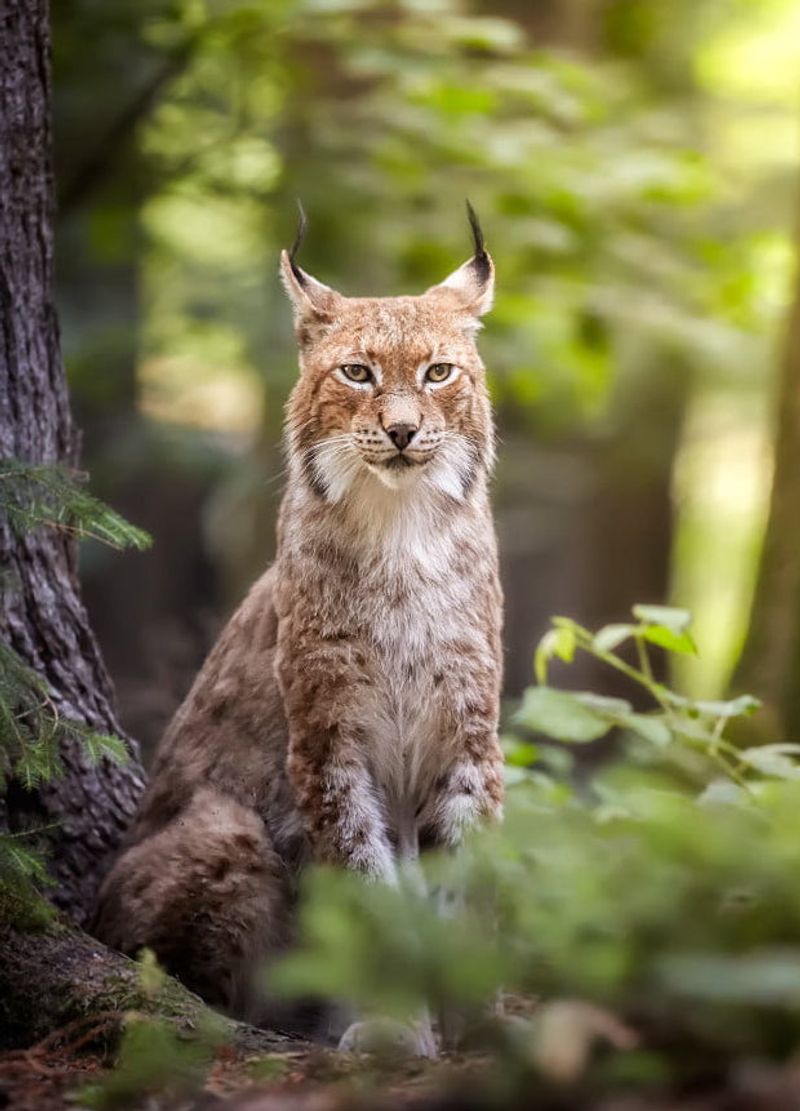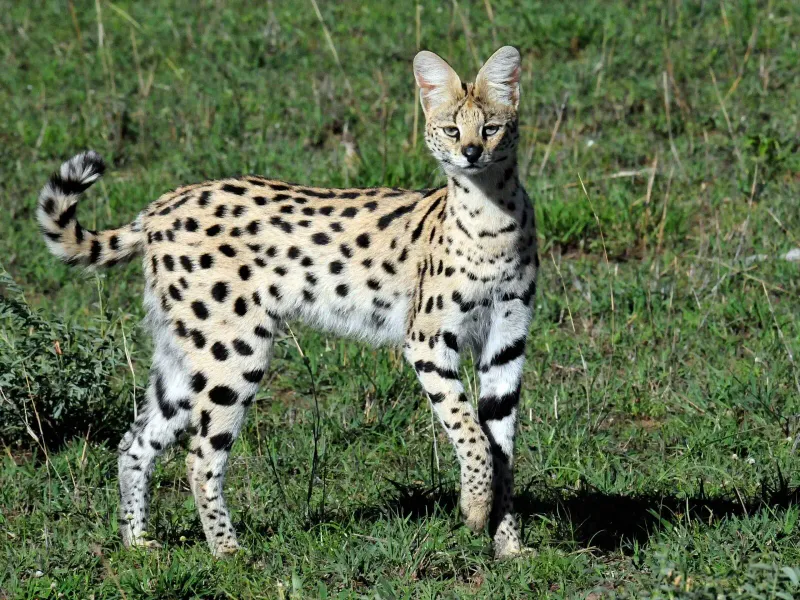📖 Table of Content:
Big cats represent some of nature’s most magnificent predators, yet many teeter on the edge of extinction. These majestic animals face mounting threats from habitat loss, poaching, and human conflict across their shrinking territories. Without urgent conservation efforts, future generations might only see these remarkable creatures in history books rather than thriving in their natural environments.
1. Amur Leopard
With fewer than 100 individuals remaining in the wild, the Amur leopard holds the unfortunate title of the world’s most endangered big cat. Native to the Russian Far East and northern China, these solitary hunters possess thick, pale coats that help them survive brutal winters with temperatures dropping to -30°C.
Rampant poaching for their beautiful spotted fur decimated their population throughout the 20th century. Forest degradation and prey scarcity further complicate their survival prospects. Conservation breeding programs offer a glimmer of hope, with recent efforts to reintroduce captive-bred leopards showing promise.
However, without expanded protected territories and stronger anti-poaching measures, these remarkable cats may soon vanish forever.
2. Arabian Leopard
Royal and elusive, the Arabian leopard roams the harsh mountain landscapes of the Arabian Peninsula. Scientists estimate fewer than 200 remain scattered across Yemen, Oman, and Saudi Arabia, making them critically endangered.
Smaller than their African cousins, these desert-adapted cats developed specialized hunting techniques to survive in arid environments. Their pale golden coats provide perfect camouflage among sun-bleached rocks and sparse vegetation. Traditional hunting, habitat fragmentation, and conflict with livestock herders threaten their existence.
Several conservation initiatives now work to protect remaining populations through community education programs and the establishment of protected reserves. Camera trap studies have revealed valuable insights about their secretive behaviors, aiding conservation strategies.
3. Indochinese Leopard
Once abundant across Southeast Asia, the Indochinese leopard now faces a grim reality with an estimated 95% population decline over the past century. These adaptable predators formerly inhabited diverse landscapes from dense jungles to mountainous regions across Thailand, Myanmar, Malaysia, and neighboring countries.
Relentless poaching for traditional medicine markets has devastated their numbers. Their bones, whiskers, and other body parts fetch high prices in illegal wildlife trade networks. Massive deforestation for palm oil plantations compounds their struggle, eliminating crucial habitat corridors.
Recent surveys suggest complete extinction in several countries where they once thrived. Conservation groups race against time to protect remaining populations through anti-poaching patrols and habitat preservation initiatives.
4. Javan Leopard
Confined to Indonesia’s most densely populated island, the Javan leopard fights for survival in fragmented forest patches. Fewer than 250 mature individuals remain, primarily in national parks and protected areas that represent tiny fractions of their historical range.
Their distinctive short, coarse fur appears darker than other leopard subspecies, with tightly packed rosettes creating an almost black appearance in some individuals. This melanistic trait occurs frequently among Javan leopards.
Agricultural expansion and illegal logging continue shrinking their habitat. Human-leopard conflicts occur when desperate cats venture near villages seeking food. Conservation programs focus on connecting isolated populations through forest corridors while working with local communities to reduce retaliatory killings when leopards prey on livestock.
5. South China Tiger
Functionally extinct in the wild, the South China tiger exists only in captivity today. No confirmed wild sightings have occurred since the 1990s, despite being the ancestral population from which all other tiger subspecies evolved.
Smaller than their Siberian cousins, these tigers once dominated the forests of central and eastern China. Mao Zedong’s government labeled them pests during the Great Leap Forward, leading to systematic hunting campaigns that slaughtered thousands. A captive breeding program maintains approximately 100 individuals, though all descend from just six wild ancestors, creating genetic diversity concerns.
The Chinese government has established reserves hoping for future reintroduction, but habitat restoration and prey base recovery remain significant challenges before these magnificent cats could ever return to their ancestral forests.
6. Malayan Tiger
National symbol of Malaysia, yet teetering on extinction’s edge, the Malayan tiger numbers fewer than 200 individuals. Recognized as a distinct subspecies only in 2004, these tigers face an uncertain future despite their cultural significance.
Slightly smaller than Bengal tigers, they patrol tropical rainforests hunting wild boar and deer. Their population crashed due to a perfect storm of threats: rampant poaching for traditional medicine markets, prey depletion from overhunting, and massive habitat loss from logging and palm oil plantations.
Dedicated rangers risk their lives protecting remaining tigers from armed poachers. Conservation organizations work with local communities to reduce human-wildlife conflict while pressuring the government to halt forest conversion. Without immediate action, Malaysia’s iconic tigers could disappear within a generation.
7. Sumatran Tiger
Smallest of all tiger subspecies, the Sumatran tiger survives exclusively on Indonesia’s largest island. Their compact size evolved as an adaptation to dense jungle habitats and smaller prey species. Dark orange fur with closely spaced black stripes provides perfect camouflage in their rainforest home. Fewer than 400 remain in isolated forest patches.
Rampant deforestation for the paper pulp and palm oil industries destroyed over 60% of their habitat in just three decades. Poaching continues despite legal protections, driven by demand for tiger parts in traditional Asian medicine. Conservation efforts focus on protecting remaining forest blocks and establishing wildlife corridors between fragmented populations.
Camera trap monitoring helps track population trends while anti-poaching units patrol critical areas. Their future depends entirely on Indonesia’s willingness to prioritize conservation over economic development.
8. Iriomote Cat
Living exclusively on a tiny Japanese island, the Iriomote cat represents one of the world’s rarest and most mysterious felines. Scientists debate whether these cats constitute a separate species or a subspecies of the leopard cat, but their isolation on Iriomote Island created unique evolutionary adaptations.
Slightly larger than domestic cats, they sport dark brown fur with subtle spots. Their semi-aquatic lifestyle includes swimming and fishing behaviors rarely seen in other wild cats. Only about 100 individuals survive on an island measuring just 114 square miles.
Tourism development, road construction, and introduced diseases threaten their precarious existence. Conservation efforts include habitat protection, roadkill prevention measures, and captive breeding research, though attempts at breeding have proven unsuccessful so far.
9. Northwest African Cheetah
Ghostly inhabitants of the Sahara, Northwest African cheetahs represent the rarest cheetah subspecies with fewer than 200 remaining. These desert specialists survive in remote regions of Algeria, Niger, and Mali, areas often too dangerous for researchers to access due to political instability.
Paler coats and smaller bodies distinguish them from their East African relatives. Adaptations for extreme desert life include the ability to survive without drinking water, obtaining moisture from their prey. Habitat degradation from livestock overgrazing eliminates vegetation needed by their prey.
Retaliatory killings occur when desperate cheetahs attack domestic animals. Conservation efforts face enormous challenges due to poverty, conflict, and limited resources in their range countries. Recent camera trap surveys provided the first scientific documentation of these elusive cats in decades.
10. Asiatic Cheetah
Once ranging from the Arabian Peninsula to India, Asiatic cheetahs now survive only in Iran’s remote central deserts. Fewer than 50 individuals remain, making them one of the most critically endangered big cats on Earth. Slightly different from African cheetahs, they have longer legs and a more slender build. Their fur grows thicker in winter to withstand cold desert nights.
These adaptable hunters learned to avoid humans by becoming primarily nocturnal. Extensive conservation efforts by Iranian authorities include anti-poaching patrols and protected reserves. Conflict with livestock herders remains problematic despite compensation programs.
Vehicle collisions on desert highways claim several precious lives each year. Scientists fear their tiny population lacks sufficient genetic diversity for long-term survival without intervention.
11. Balkan Lynx
Hidden in the mountainous borderlands between Albania, North Macedonia, and Kosovo, the Balkan lynx population hovers around 40 individuals. A distinct subspecies of Eurasian lynx, these secretive cats evolved in isolation for thousands of years.
Slightly smaller than other lynx, they feature the characteristic tufted ears and short bobbed tails. Their spotted coats provide perfect camouflage in the dappled light of mountain forests. They hunt primarily roe deer and hares.
Decades of political instability in the Balkans hampered conservation efforts. Illegal logging destroys critical habitat while poaching continues despite legal protection. Cross-border conservation initiatives now bring hope through protected areas and wildlife corridors. Camera trap monitoring helps scientists track remaining individuals and identify priority protection zones.
12. Mediterranean Serval
Long thought extinct, Mediterranean servals may still cling to existence in remote North African wetlands. Historical records show these distinctive cats once inhabited coastal regions from Morocco to Egypt, but habitat destruction and hunting eliminated most populations by the mid-20th century.
Taller than domestic cats with extraordinarily long legs, servals evolved specialized adaptations for hunting in tall grass. Their oversized ears can detect prey moving underground, while their spotted coats provide camouflage.
Recent unconfirmed sightings in Moroccan and Algerian wetlands sparked renewed interest. Conservation groups launched survey expeditions using camera traps and environmental DNA sampling. If rediscovered, immediate protection measures would be crucial. Their potential habitat faces threats from agricultural expansion, water diversion projects, and climate change-induced drought.
